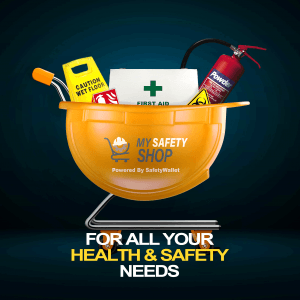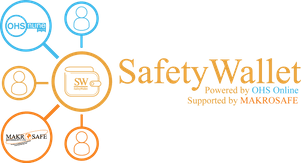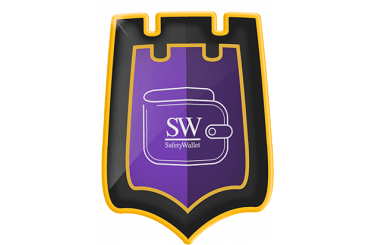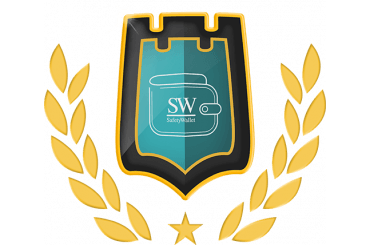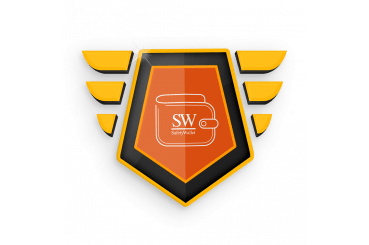HEALTH AND SAFETY HYGIENE SURVEYS
Employers in South Africa are required to ensure that the work environment is free of risks to the health and safety of employees and visitors to the premises. To ensure that this is done, employers are required to assess the exposure that their employees have to hazardous environmental conditions.
Occupational Health and Safety Hygiene Surveys in the Workplace
This can be done effectively by carrying out occupational hygiene surveys, health and safety hygiene surveys, and overall workplace surveys. While the employer is the ultimate responsible party to ensure this, they can employ the services of a competent person who is trained and certified to carry out these health and safety surveys in the workplace.
If there is an assessment that indicates consistent risks from exposures, employers are obligated to have these exposures measured so that the results can be compared to prescribed health and safety standards.
The next step to follow, after the health and safety survey, is to implement the necessary steps to limit exposure according to the Occupational Health and Safety Act 85 of 1993. This process is also referred to as monitoring and it requires approval and verification from an Approved Inspection Authority.
The importance of hygiene surveys cannot be emphasised enough, with the health and safety of employees as a top priority of any organisation or employer, which is why the International Organisation for Standardisation developed ISO 45001, Occupational Health and Safety Management Systems.
It is impossible to predict when a workplace event may occur. Even while it is difficult to eliminate the possibility of an unanticipated accident, it is within the power of South African company owners to reduce the chance of workplace injuries.
Many industrial sites have different equipment, chemicals, and tools that employees must use to carry out their duties, and they are exposed to certain hazards regularly and reducing the dangers they confront could help keep workplace injury rates low.
The occupational hygiene assessment is a thorough study of the dangers in the workplace that might endanger workers. It enables the employer to assess risks and evaluate if enough safeguards are in place to protect your personnel.
Accidents and illness have the potential to destroy lives. It may also harm the overall company by reducing productivity, causing mechanical damage, and driving up insurance costs.
The following are some of the laws that apply to workplaces in South Africa to meet occupational hygiene standards:
- Section 8 of the Occupational Health and Safety Act of 1993
- Section 5 of the Hazardous Chemical Substances Regulation of 1995
- Section 6 of the Noise-Induced Hearing Loss Regulation of 2004
Who Conducts a Hygiene Survey?
To assist companies in complying with South African standards relating to Health and Safety Hygiene Surveys, legislation mandates that surveys and evaluations be done by an Approved Inspection Authority.
In every workplace, employers must implement a thorough Occupational Hygiene Program that clearly defines and indicates the different responsibilities of persons who must be involved. The Occupational Hygiene Program must consist of these components:
- Commitment of the organisation
- Occupational Hygiene Survey Process
- Roles and Responsibilities
The process involved with a Hygiene Survey include:
- Hazard Assessment
- Determining the Level of Risk
- Level of control over the risk
- Walkthrough Survey
- Exposure assessment
- Determine the level of exposure
- Implement controls
- Indicate any additional assessments on exposure
- Implement monitoring schedules
Hazard Assessment
When a chemical, biological, or physical danger is detected on the hazard assessment, the occupational hygiene procedure is initiated.
Determining the Level of Risk
The hazard assessment must be conducted by a competent person and include a qualitative assessment of the risks which are connected to the identified occupational hygiene hazard.
The possible health impacts that might occur from the amounts utilized and the period of exposure are considered to determine whether the risk level is acceptable. Further action is necessary if the substance/agent provides an unacceptable danger or if the risk level is uncertain.
Level of Control Over the Risk
If controls can be implemented to control the risk, it must be done according to legislative requirements. If controls can be implemented to mitigate the risk their effectiveness must be verified and/or monitored to ensure that the process can be completed.
If a hazard cannot be controlled or there are specific regulatory requirements that demand it, a walkthrough survey must be carried out. In addition, walkthroughs are necessary when the controls that have been implemented are not effective.
Walkthrough Survey
If further investigation is necessary, a walkthrough must be carried out with the responsible supervisor or manager in the area where the hazard has been identified. The walkthrough survey must note the following:
- The name of the department where the hazard was identified along with the specific process
- The name of the operation
- The raw materials being used and their quantities
- The equipment and machinery used to carry out the task
- The health hazards that were identified and the routes associated with exposure
- The current controls that are in place
- The number of workers who are exposed and their specific positions
- The items that must be followed up after the hygiene survey
Exposure Assessment
When the walkthrough has been carried out, the information that was collected can be used to determine the level of worker exposure. The quantitative evaluation of exposure will need a level of monitoring, which will be determined by the following factors:
- The duration of exposure
- The number of workers in the area that are exposed to the same risk
- The sampling methods that are currently being used and their limitations
- The degree of accuracy that is required in the results obtained
- The number of samples that must be collected to achieve representative results
- The cost
- The regulatory requirements
Determine the Level of Exposure
To determine whether the level of exposure is acceptable the Occupational Exposure Limits, or OELs must be used alongside approved occupational hygiene practices as well as professional judgment. This determination can be guided by an action level, or the point at which hazard controls are recommended and set at 50% of the OEL, especially where historical data is not readily available.
However, if adequate historical data is available, action levels can be determined using the approved and current occupational hygiene practices.
Implement Controls
The hierarchy of controls must be considered when new controls are implemented for the identified and assessed hazards. Engineering controls must always get preference followed by administrative controls and then personal protective equipment (PPE).
The hazard controls must be implemented by the supervisor or manager of the department and the Occupational Hygiene Consultant must be notified in writing of such implementation.
Indicate any Additional Assessments on Exposure
A crucial process revolves around evaluating the effectiveness of controls, which will require a monitoring strategy as well as a schedule. If there are new processes, equipment, or products introduced into the workplace additional exposure assessments must be carried out.
Implement Monitoring Schedules
When substances or agents cannot be eliminated in the workplace a monitoring schedule must be developed. These must indicate the following:
- The specific agent or substance to be monitored
- The frequency of monitoring
- How the monitoring will be carried out
List of Hygiene Surveys
There is a comprehensive list of Occupational Hygiene Surveys that must be carried out, including the following according to certain legislation at certain intervals by a certain person. These surveys are as follows:
- Occupational Hygiene Risk Assessment must be carried out every 24 months by a Legislated Competent Person.
- Hazardous Chemical Substance Risk Assessment must be carried out every 24 months by a Legislated Competent Person.
- Asbestos Risk Assessment & Inventory must be carried out every 24 months by a Legislated Competent Person.
- Ergonomics Assessments must be carried out every 24 months by a Legislated Competent Person.
- Emergency Illumination Surveys must be carried out Monthly by a Legislated Competent Person.
- Hearing Conservation must be done every 24 months by a Legislated AIA.
- Personal Exposure Monitoring must be done every 24 months by a Legislated AIA.
- Illumination Surveys either daytime or night-time every 24 months by a Legislated Competent Person.
- Ventilation and IAQ Surveys every 24 months by a Legislated Competent Person.
- Local Extraction Ventilation Surveys must be done every 24 months by a Legislated AIA.
- Hazardous Chemical Substances surveys must be done every 12 months for an HCS where there is an OEL control limit and every 24 months for an HCS with a recommended OEL limited. These must be carried out by a Legislated AIA.
- Thermal Stress surveys must be done every 24 months by a Legislated Competent Person.
- Vibration Surveys must be done every 24 months by a Legislated Competent Person.
- Facilities and Hygiene Surveys must be done every 24 months by a Legislated Competent Person.
- Potable Water Sampling must be done every 24 months by a Legislated Competent Person.
- Hazardous Biological Monitoring must be done every 24 months by a Legislated Competent Person.
Who Must Have a Hygiene Survey Conducted?
According to the Occupational Health and Safety Act 85 of 1993, all employers must ensure that the workplace is safe, healthy, and free of hazards and risks to the health, safety, and wellbeing of employees.
Thus, all companies and employers across South Africa must have workplace surveys done according to regulatory requirements, according to the types of hygiene and health risks associated with the operations of the business.
Employers can expect some of the following when they have Occupational Hygiene Surveys carried out:
- A thorough examination of the organization's present health and safety paperwork.
- The compilation of Safety, Health, and Environmental files.
- The management and control of all health and safety documents.
- The modification of current health and safety systems where necessary.
- The design, development, and maintenance of all electronic management systems relating to Safety and Health.
Return on Investment When Conducting Hygiene Surveys Through SafetyWallet
SafetyWallet is a focus point in South Africa involved with supporting and assisting employers across all industries in managing and improving their health and safety compliance.
An occupational hygiene survey is a thorough study of the workplace dangers that might damage employees. It enables employers to assess risks and evaluate if enough safeguards are in place to protect employees as well as visitors to the premises.
With SafetyWallet, employers can establish an effective Health and Safety Programme, which can include comprehensive hygiene surveys. Not only does this minimise harm to employees but it also protects employers and employees against criminal and civil liability.
In addition, one of the major benefits of an effective hygiene survey is that it can help reduce incidents in the workplace as well as limit exposure of workers to components that can make them ill.
The spectrum of health dangers in the workplace is now more diverse than it has ever been. We are aware of the health risks posed by noise, heat, or cold, ergonomic strains, ionizing radiation, microwaves, infectious illnesses, and psychological stress, in addition to chemical threats.
Occupational hygienists are responsible for safeguarding employees from the dangers presented by modern technology in industries that are fast-paced, facing constant development and upgrades, which means that workers can be exposed to new hazards and risks frequently.
When employers subscribe to SafetyWallet, they will become eligible for several rewards when they make purchases from the My Safety Shop. SafetyWallet Rewards is the world's first behavioural health and safety membership program, and it plays a critical role in rewarding members in all areas of health and safety.
